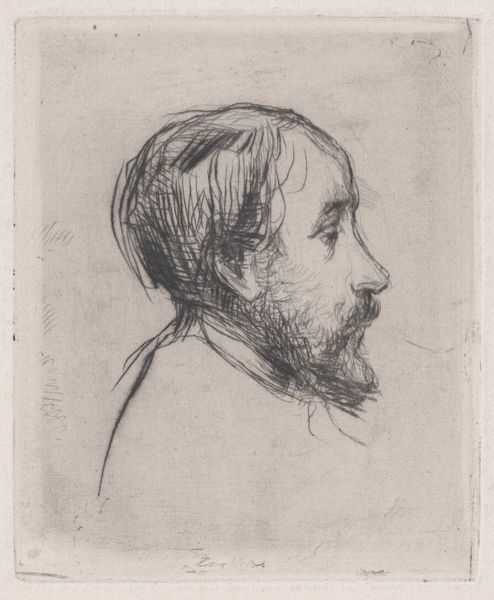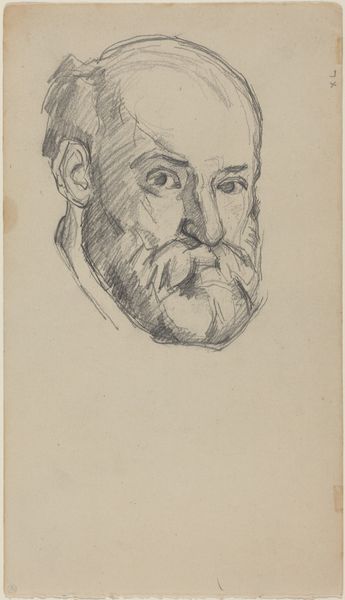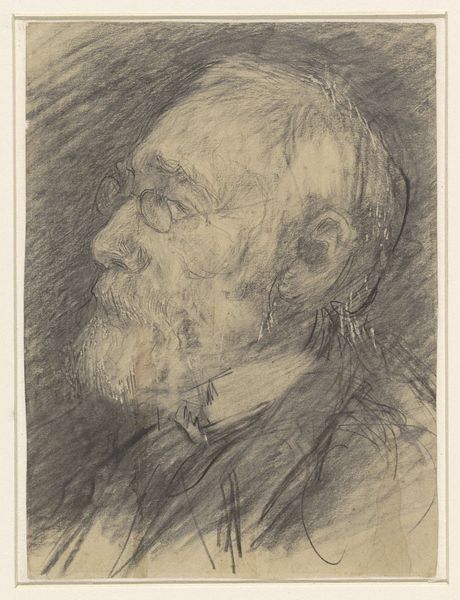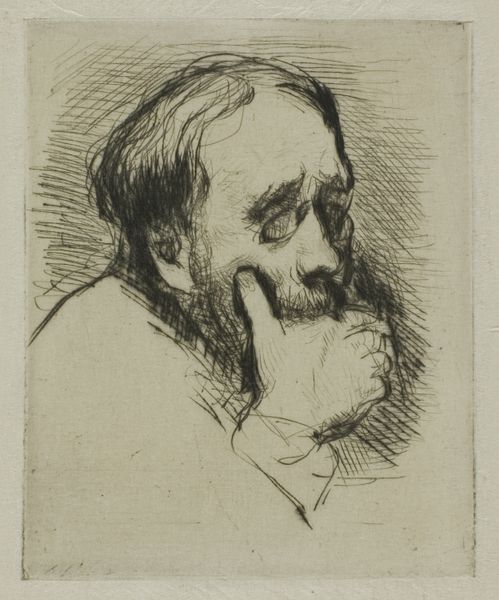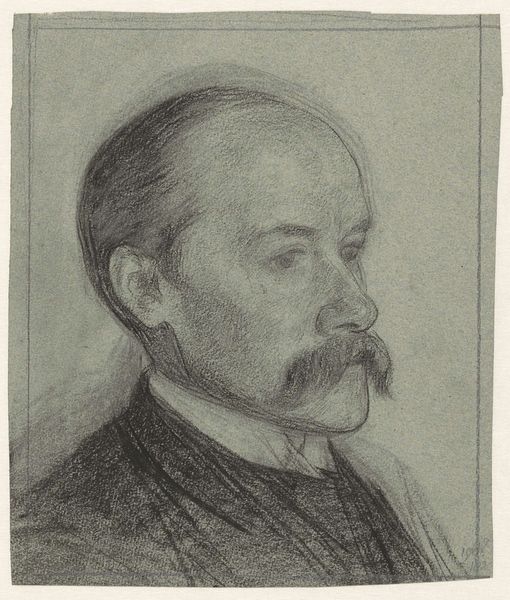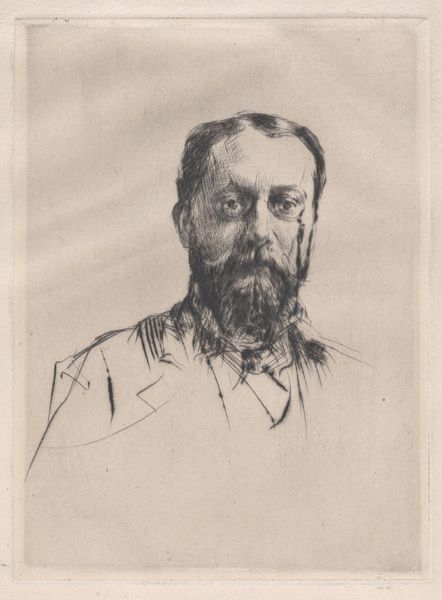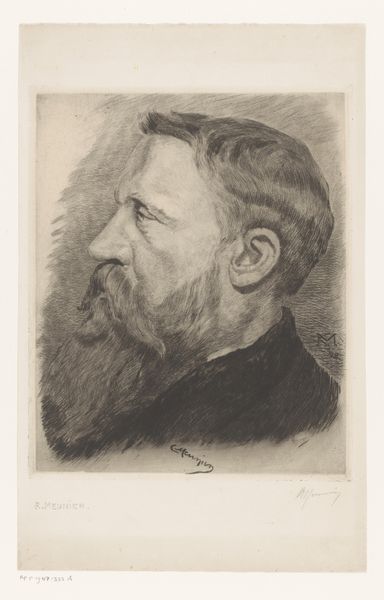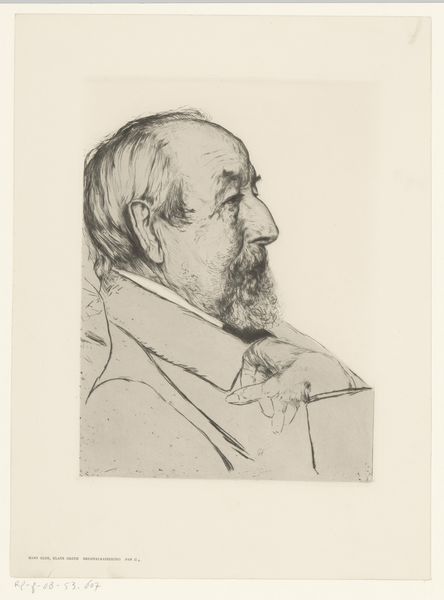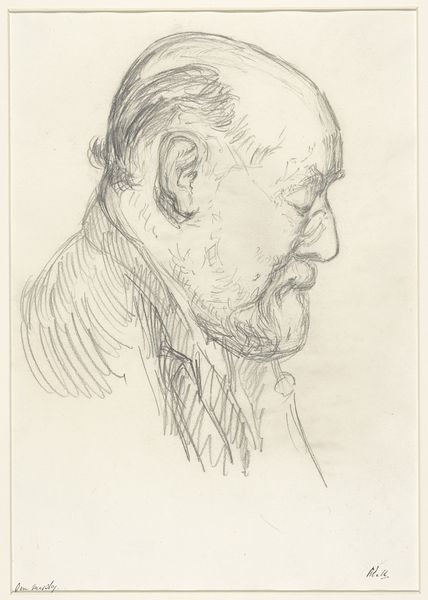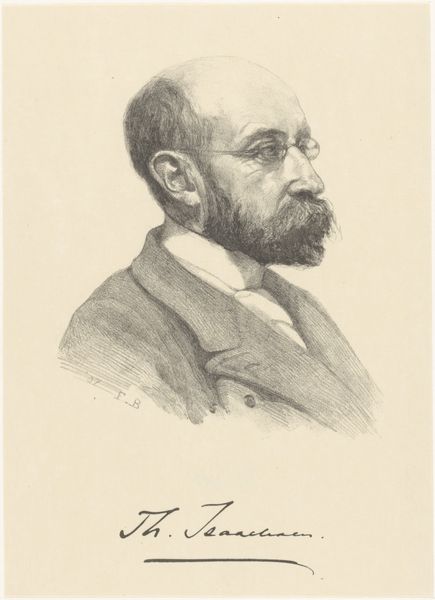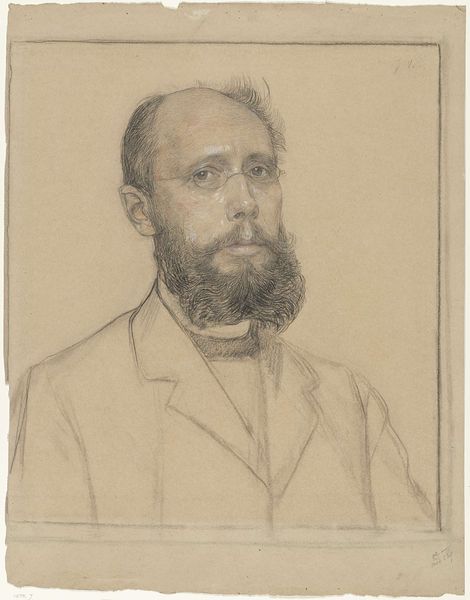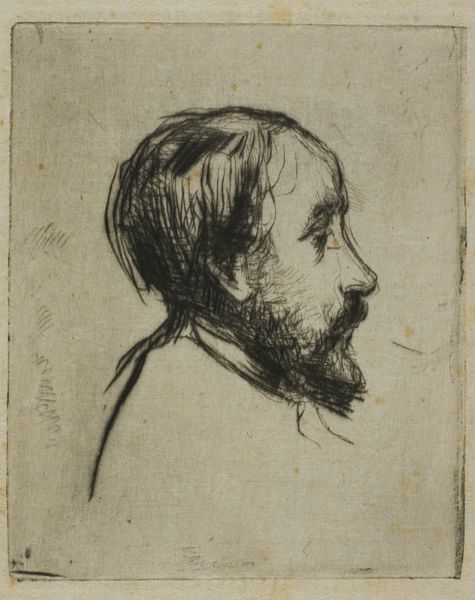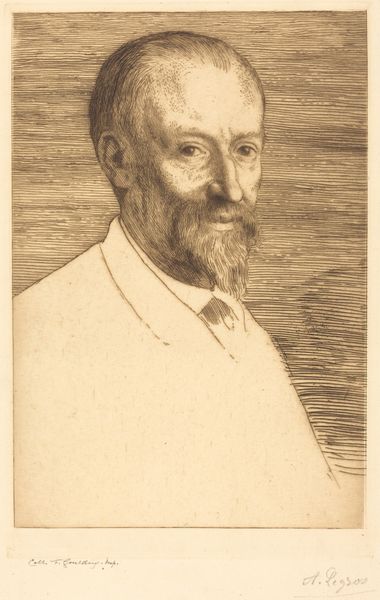
#
pencil drawn
#
amateur sketch
#
toned paper
#
light pencil work
#
pencil sketch
#
personal sketchbook
#
portrait reference
#
pencil drawing
#
portrait drawing
#
pencil work
Dimensions: height 160 mm, width 111 mm
Copyright: Rijks Museum: Open Domain
Curator: What strikes me first is the immediacy of this pencil sketch. It has a certain raw, vulnerable quality. Editor: Indeed. What we have here is a work entitled 'Portret van Willem C. Bauer.' We believe it was created sometime between 1875 and 1938 by the artist Rinus Reus. The medium is simply pencil on paper, a portrait drawing, quick but effective. Curator: Effective is a good word. There's a directness in the gaze, almost confrontational. He appears a figure burdened by the weight of his time, his context. I’m drawn to the possibility that this was a work made during times of socio-political unrest and its symbolism for Bauer during that period. The rough pencil work enhances that feeling of disquiet, of unease. Editor: The style, of course, speaks to a longer tradition of portraiture, think of the ways artistic institutions often reinforced ideas about class and authority, particularly in commissioned works, but here, we see something rawer. What stories can we glean through his rendering on paper? Did this person carry social or political influence? Was he well liked in social circles or was this merely a representation of some sort of artistic endeavor? It may be that these were the type of persons this particular artist socialized with. Curator: Precisely! It’s these power dynamics that are intriguing to contemplate. Did the artist attempt to capture Willem Bauer's essence, and if so, what particular features were deliberately included and excluded to portray this individual and promote, maintain or influence some implicit social message. The interplay of identity, representation, and authority is ever present. Editor: Absolutely. It’s always about more than just capturing a likeness, but is it a moment that freezes a part of Bauer that we may or may not ever get to experience? Curator: Exactly, and that's what compels me. Even in its simplicity, it reflects those societal mirrors—making this image so lasting and significant to understanding our collective histories. Editor: A wonderful note to end on. Thanks.
Comments
No comments
Be the first to comment and join the conversation on the ultimate creative platform.
